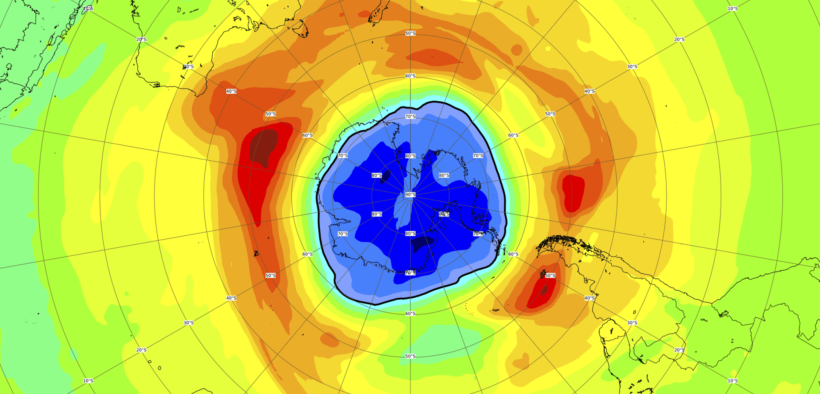Ozone hole over Antarctica larger than usual, scientists say

It’s now bigger than Antarctica‘s annual ozone hole, according to European Union scientists with the Copernicus Atmosphere Monitoring Service (CAMS).
During the Southern Hemisphere’s spring, from August to October, the ozone depletes, and a hole form over Antarctica. According to Copernicus, it reaches its maximum size between the middle of September and the middle of October.
The hole has grown “considerably” in the last week and is already larger than 75% of prior years’ ozone holes at the same stage of the season since 1979; it now dwarfs the continent it hovers over.
“This year; the ozone hole developed as expected at the start of the season,” said Vincent-Henri Peuch, Copernicus director, in a statement.
“Now our forecasts reveal that this year’s hole has grown larger than normal.”
Last year’s hole began normally in September as well, but, according to Copernicus, it ended up being “one of the longest-lasting ozone holes in our record.”
The Earth is shielded from UV radiation by the ozone layer, which extends 9 to 22 miles into space.
Catalytic reactions occur in the Antarctic winter; when chemicals such as chlorine and bromine migrate into the stratosphere and create a hole there.
The Antarctic polar vortex, a spinning mass of freezing air that circles the planet, is connected to the ozone hole. When the temperature in the stratosphere rises in the late spring, ozone depletion slows, the polar vortex weakens and finally breaks down, and by December, ozone levels normally return to normal.
According to Copernicus and NASA, the polar vortex that forms during Antarctic winter isolates the air, allowing pollutants like chlorine and bromine to destroy the ozone layer. Ozone levels are normally back to normal by December.
Copernicus uses computer modeling and satellite measurements to keep tabs on the ozone layer; while it is showing signs of recovery now; Copernicus estimates that the ozone layer will not be fully recovered until the 2060s or 2070s.
This is due to the fact that the consequences of the phaseout of ozone-depleting chlorofluorocarbons (CFCs) will take time to show.
To begin regulating chemicals, the United States signed the Montreal Protocol in 1987. According to the EPA; they will be phased out by 2030.
According to research published in Nature magazine this month; if the protocol had not outlawed CFCs; global temperatures would have risen by 2.5 degrees Celsius and the ozone layer would have collapsed.









